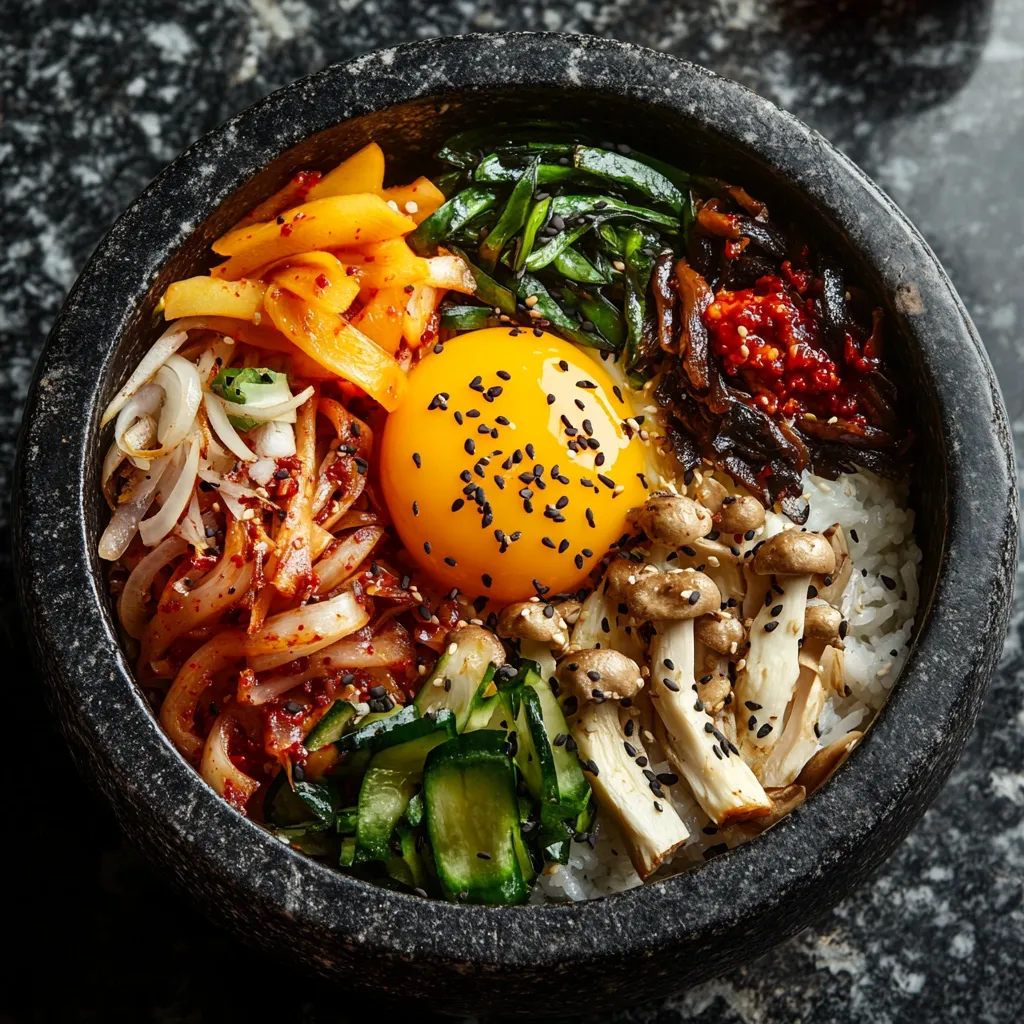
Korean Dolsot Bibimbap with Cremini Mushrooms
Daily Recipe: September 19, 2024
This innovative recipe combines the rich flavors of Korean cuisine with the earthy taste of Cremini mushrooms to create a main course that's both comforting and exotic. The star of this dish is 'Dolsot Bibimbap with Cremini Mushrooms', a warm stone pot filled with seasoned rice, a medley of vibrant vegetables, thinly sliced beef, and perfectly cooked egg. Gochujang, a popular Korean chili paste, adds a spicy punch, making this dish a visual and flavorful feast.
Ingredients (for 4)
- Cremini mushrooms - 2 cups - sliced
- Short grain rice - 2 cups - washed and drained
- Beef - 200g - thinly sliced
- Spinach - 1 cup - blanched
- Carrots - 1 cup - shredded
- Bean sprouts - 1 cup - blanched
- Radish - 1 cup - shredded
- Zucchini - 1 cup - shredded
- Eggs - 4 - cooked sunny side up
- Soy sauce - 2 tablespoons
- Sugar - 1 tablespoon
- Sesame oil - 2 tablespoons
- Gochujang paste - 4 tablespoons
- Vegetable oil - 1 tablespoon
- Garlic - 2 cloves - minced
- Salt - - to taste
Preparation
-
Step 1 - 🥩🥣⏲️Combine the thinly sliced beef with soy sauce, sugar, minced garlic, and 1 tablespoon of sesame oil. Set this mixture aside to marinate for 30 minutes.
-
Step 2 - 🍄🍳🧂In a pan, sauté the sliced Cremini mushrooms with vegetable oil and a pinch of salt. Once they're cooked, set them aside.
-
Step 3 - 🥩🍳🔥In the same pan you just used, cook the marinated beef until it turns a delicious brown.
-
Step 4 - 🍚🥘🔥Put the washed and drained short grain rice in a dolsot (or a heavy bottom pot) and add water. Cook this over medium heat for 15-20 minutes.
-
Step 5 - 🥩🍄🍚💚🥕🌱🔪On top of the cooked rice, arrange the sautéed mushrooms, cooked beef, and raw spinach, carrots, bean sprouts, radish, and zucchini.
-
Step 6 - 🍚🔥💥Put the pot back over high heat until the bottom layer of rice becomes slightly crispy.
-
Step 7 - 🍳🍲🌶️Top each serving of the dish with a sunny side up egg and serve it with gochujang on the side for adding to taste.
Additional
You can easily customize this Korean Bibimbap recipe by swapping out different vegetables, proteins or grains according to your preference. For a vegetarian variant, skip the beef, add more mushrooms or tofu. You might want to consider providing a second smaller stone pot or a ceramic bowl for the guests who are less adventurous with spicy food.